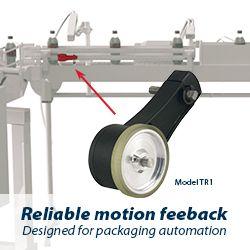USB3 Vision camera interface standard announced
A new camera interface standard that is based on the USB 3.0 interface (SuperSpeed USB) is being developed specifically for the global machine vision market.
A new camera interface standard that is based on the USB 3.0 interface (SuperSpeed USB) is being developed specifically for the global machine vision market. Called USB3 Vision, this new standard will take advantage of the soon-to-be prevalent USB 3.0 ports that will be standard on most PCs. Designed to give users plug and play capability using components from different manufacturers, USB3 Vision offers bandwidth of 3.2 Gb/s with both power and data over the same passive cable to five meters length or over active cable to 10 meters or more. Hosted by the AIA, the global trade association for the vision and imaging industry, the standard is targeted for release in 2012.
A kick-off meeting for the development of the USB3 Vision standard was held on September 12-14, 2011 in Ahrensburg, Germany. A group of industry leading suppliers have joined the committee to create the standard specification including: 3M, Adimec, Allied Vision Technologies, Basler Vision Technologies, Baumer Optronic GmbH, Components Express, Inc., Gidel Ltd., Hamamatsu Corporation, MATRIX VISION GmbH, Matrox Imaging, Mathworks, MVTec Software GmbH, National Instruments, Point Grey Research Inc., Silicon Software GmbH, Sony Visual Imaging Products, STEMMER IMAGING, Teledyne DALSA, Toshiba Teli Corporation, and XIMEA.
USB3 Vision Committee Chair Eric Gross of National Instruments reports that initial work on the specification is well under way with an aggressive release date of mid-2012. "The USB 3.0 interface's combination of high bandwidth and wide availability of hardware opens the door for powerful machine vision applications that will meet the needs of a wide variety of end-users," said Gross. "The architecture of the standard is based on existing consumer hardware and draws from widely-adopted vision standards such as GenICam. We expect this combination to reduce the time to market for a multitude of USB3 Vision components."
This unique building block approach simplifies the standard as it will not be concerned with the camera functionality, but instead just four basic operations: device discovery; device control; event handling; and streaming data. The standard defines the mechanics of screw locks for USB3 Vision connectors in various cable angles. The connectors are based on the micro-USB 3.0 connector. A device can optionally support device functionality with USB 2.0. A complete whitepaper outlines the details of the standard and is available by request to AIA.
"The fact that we received such a strong level of participation and commitment from the machine vision community shows that the market is ready for a USB 3.0-based standard," said Bob McCurrach, AIA's Director of Standards. "The plug and play nature of the USB 3.0 interface, combined with its strong brand awareness will help open up new markets and applications for machine vision technology."
Featured Product

